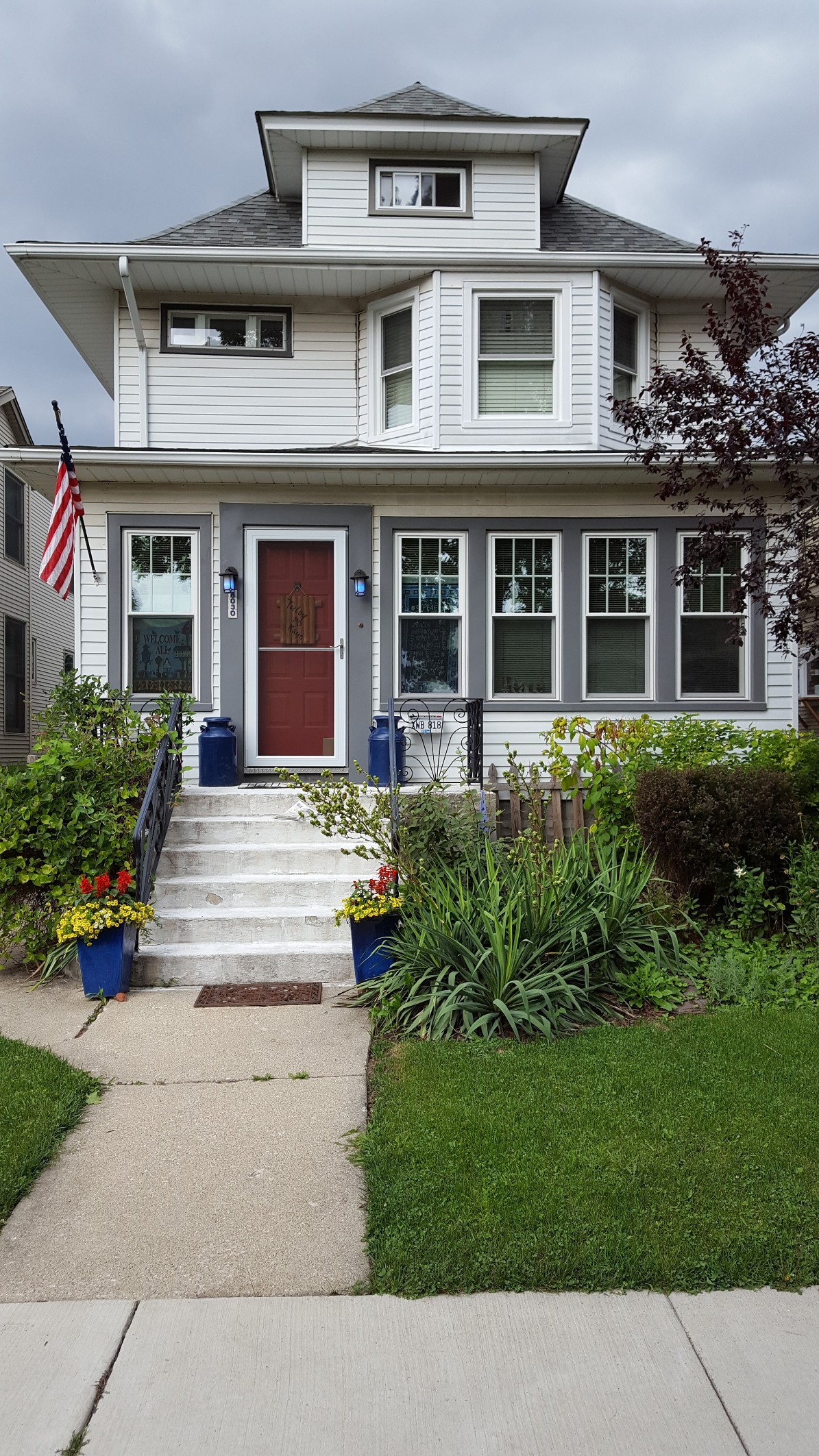aka Hairy Balls – aka Family Jewels – aka Bishop’s Balls – aka Swan Plant
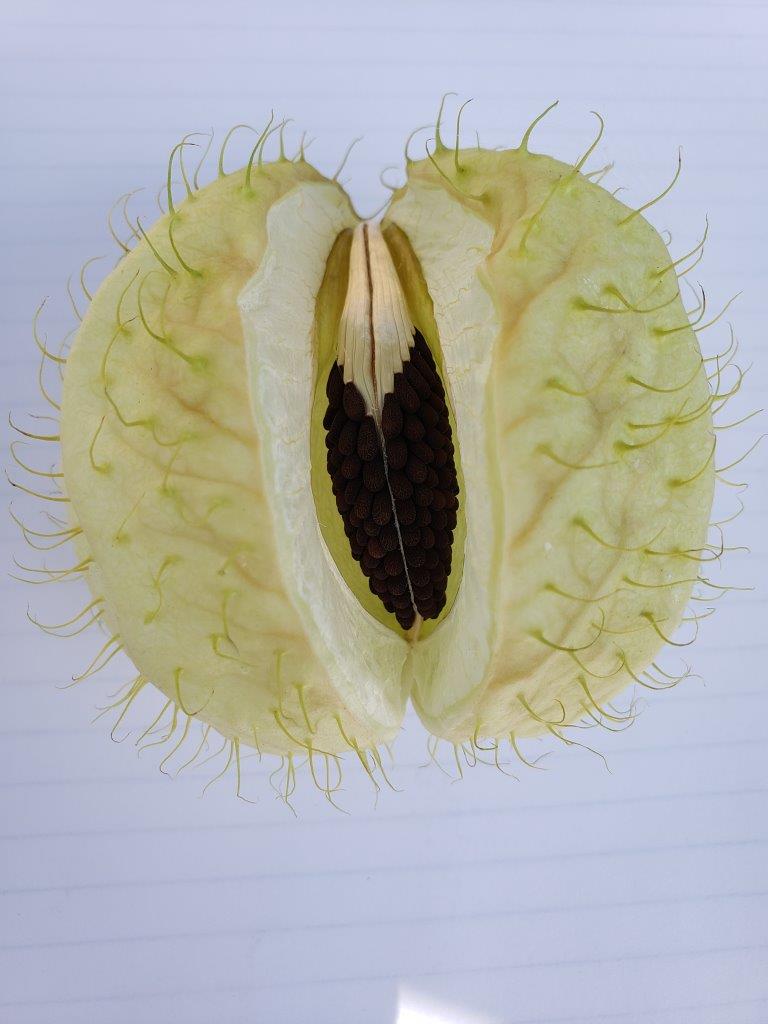
Balloons and more balloons. At the end of last summer, Eva Chase made a comment: “wouldn’t it be funny if a bunch of neighbors had balloon milkweed plants growing in front of their houses on our block of Berteau?”
What a great idea. So that’s what we did this summer.
A Bevy of Balloons on Berteau
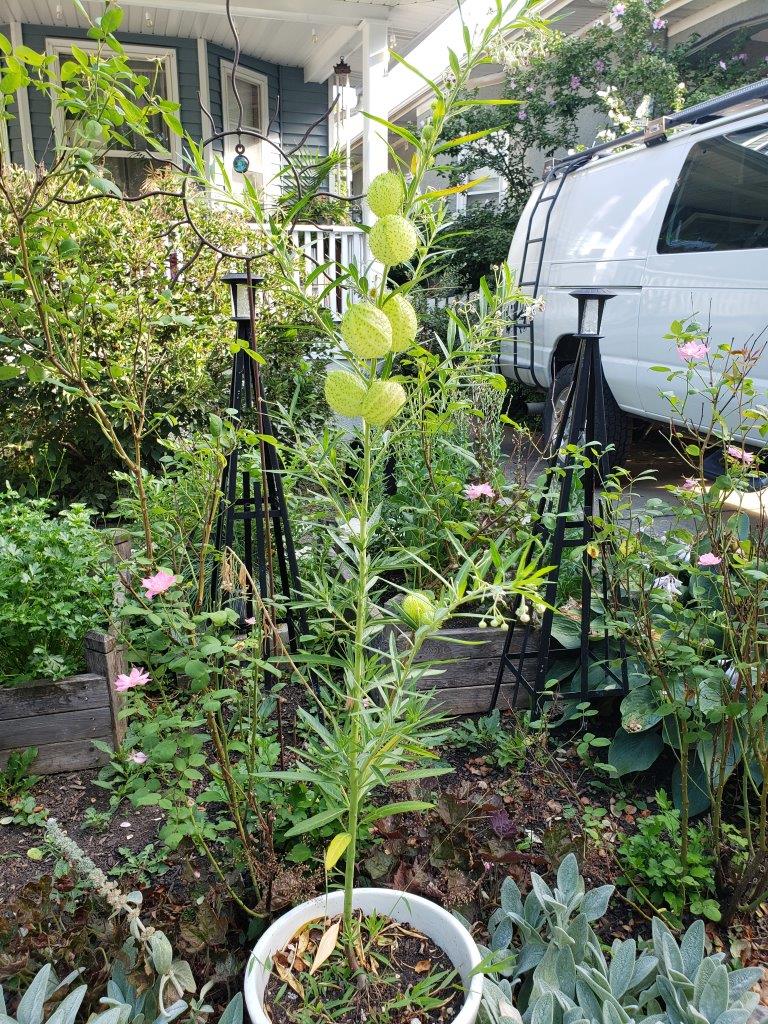
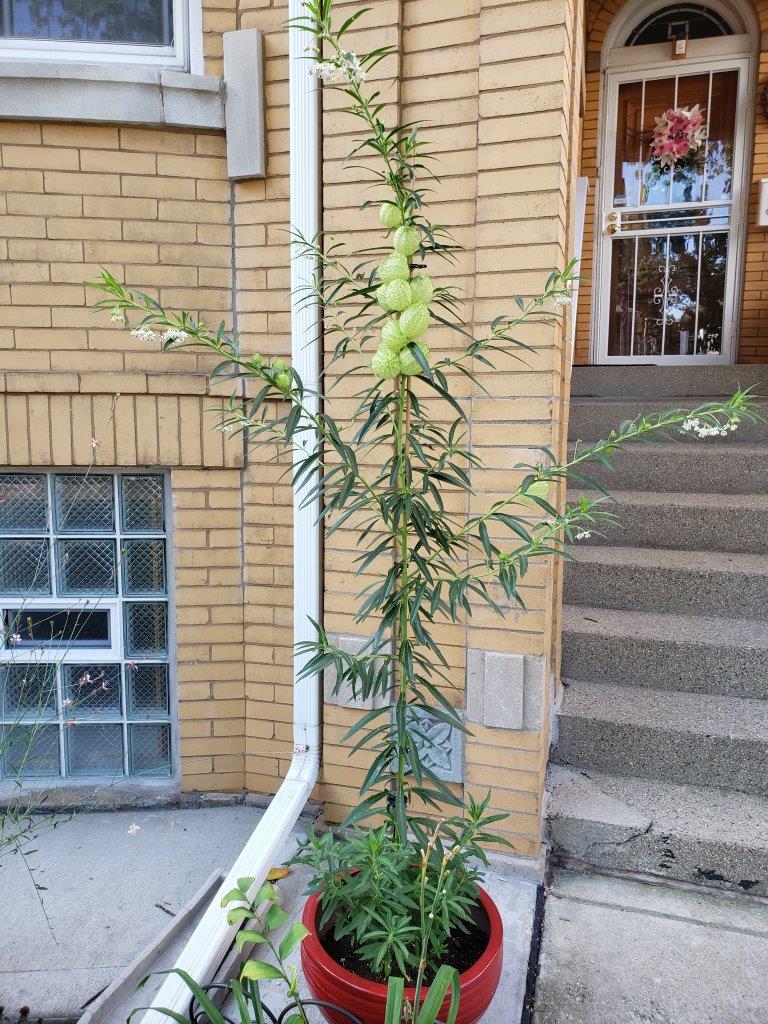
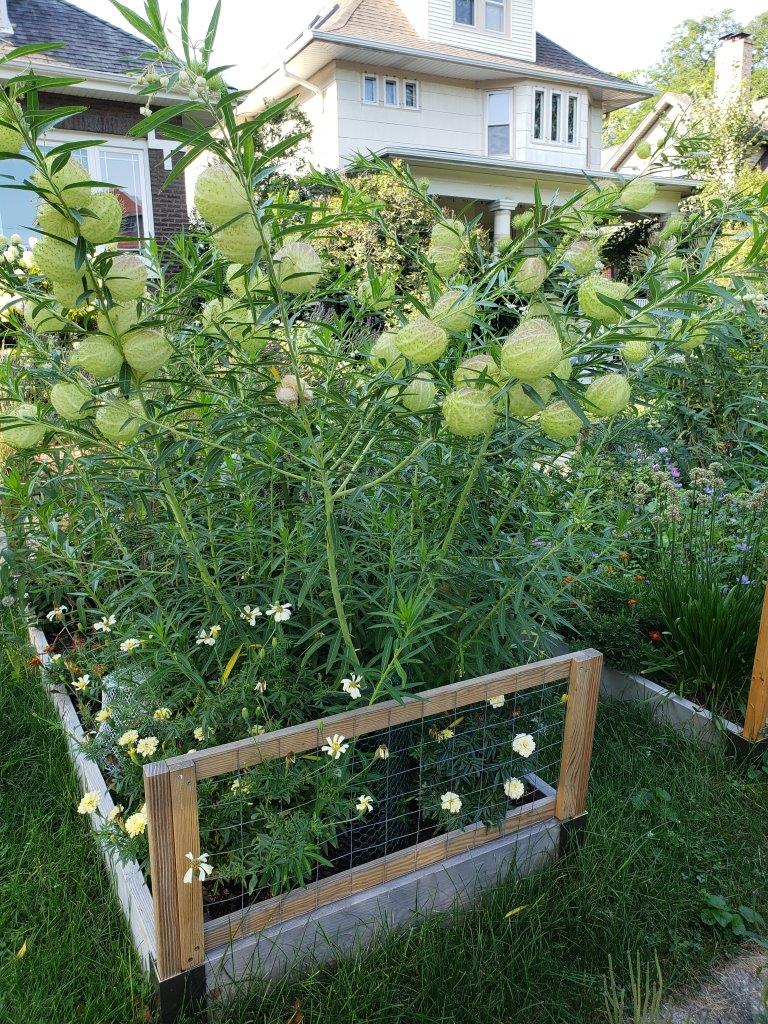
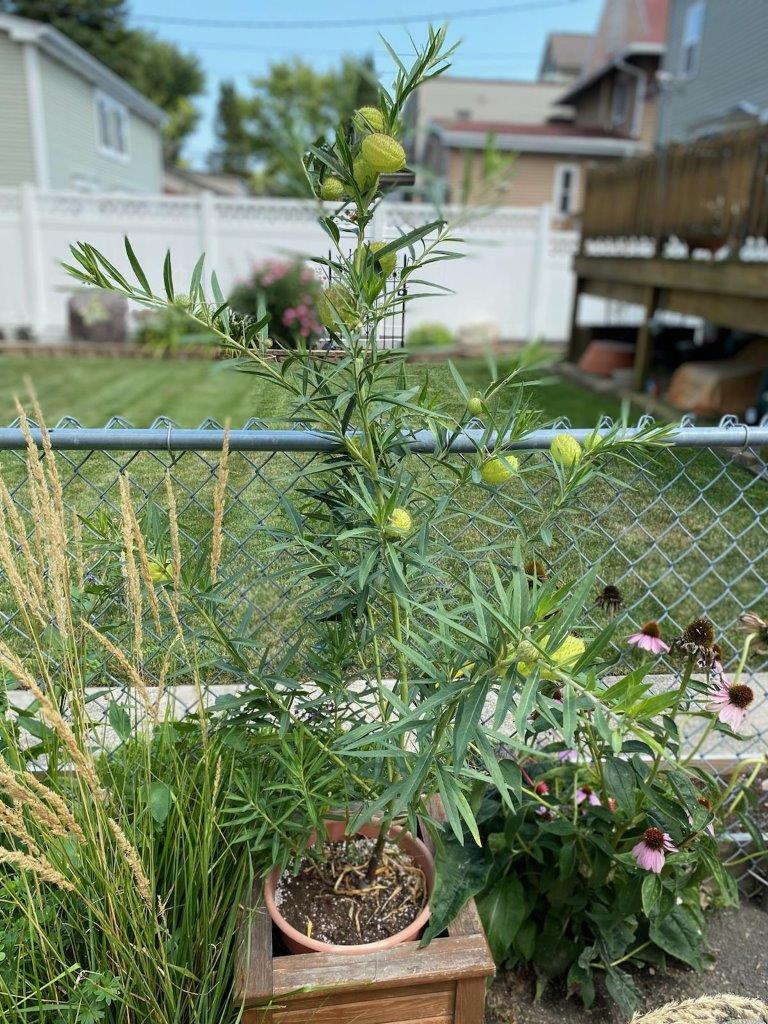
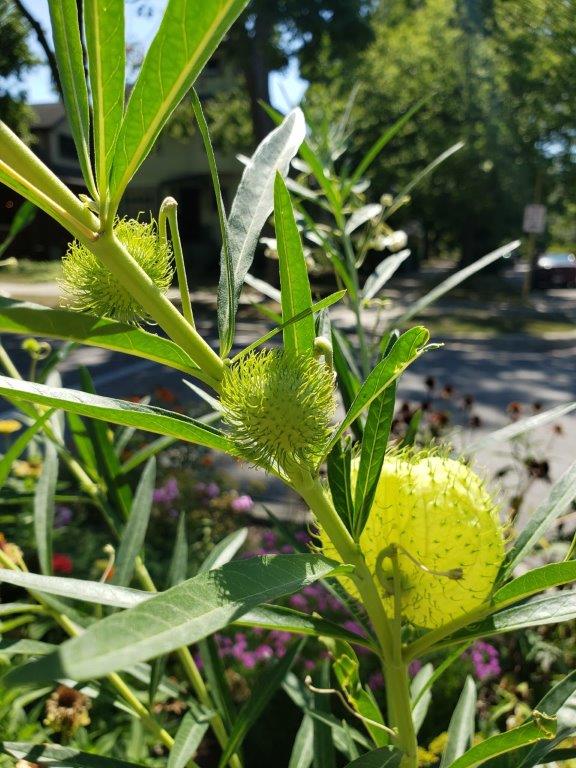
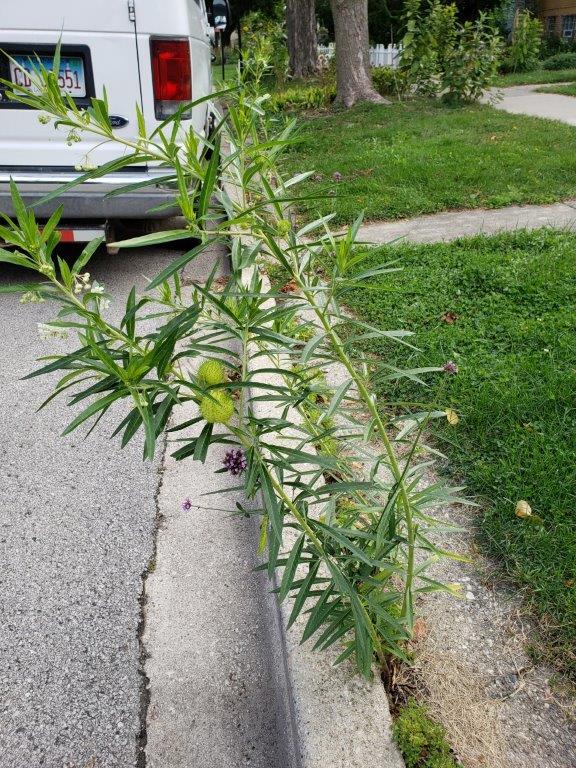
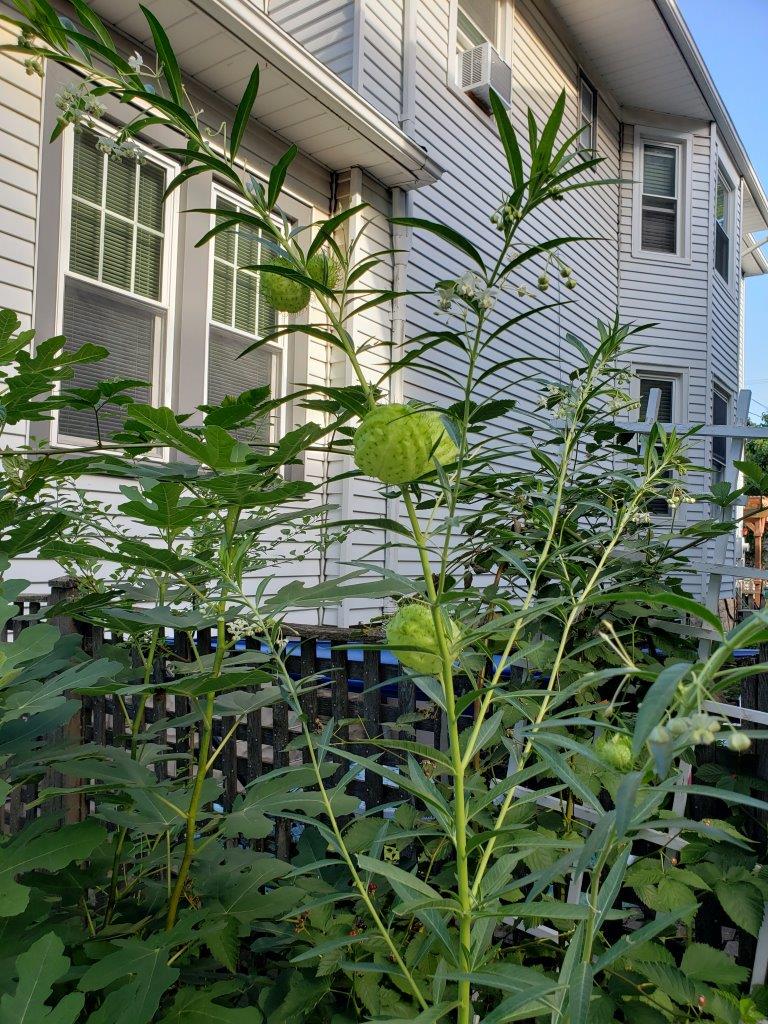
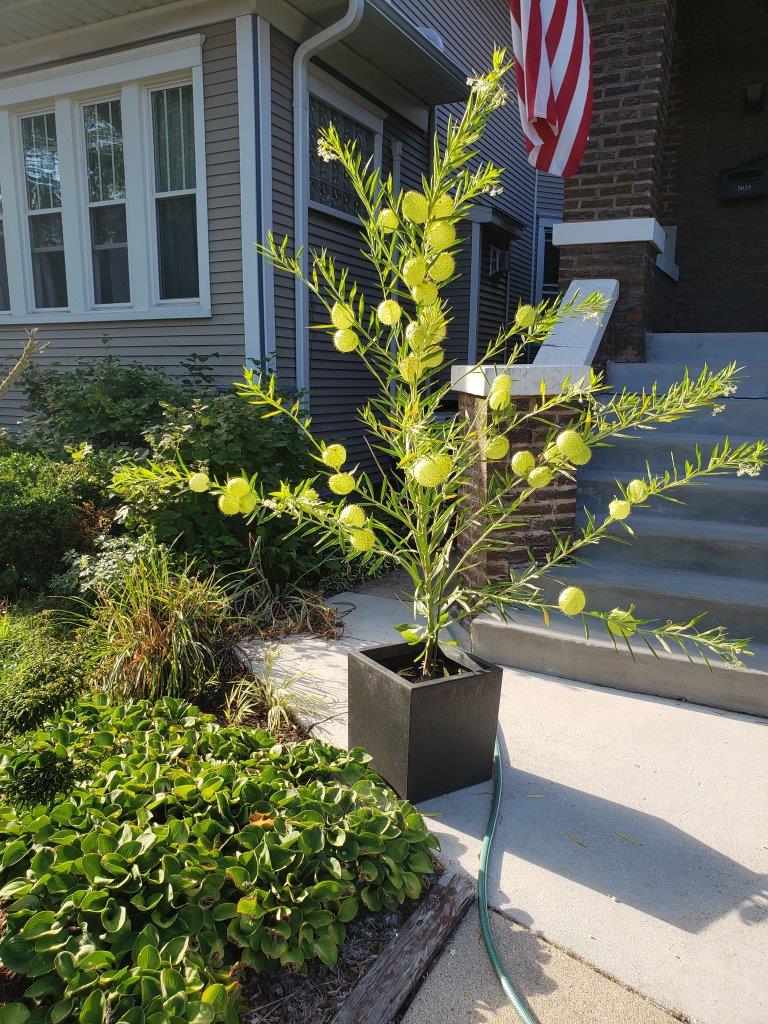
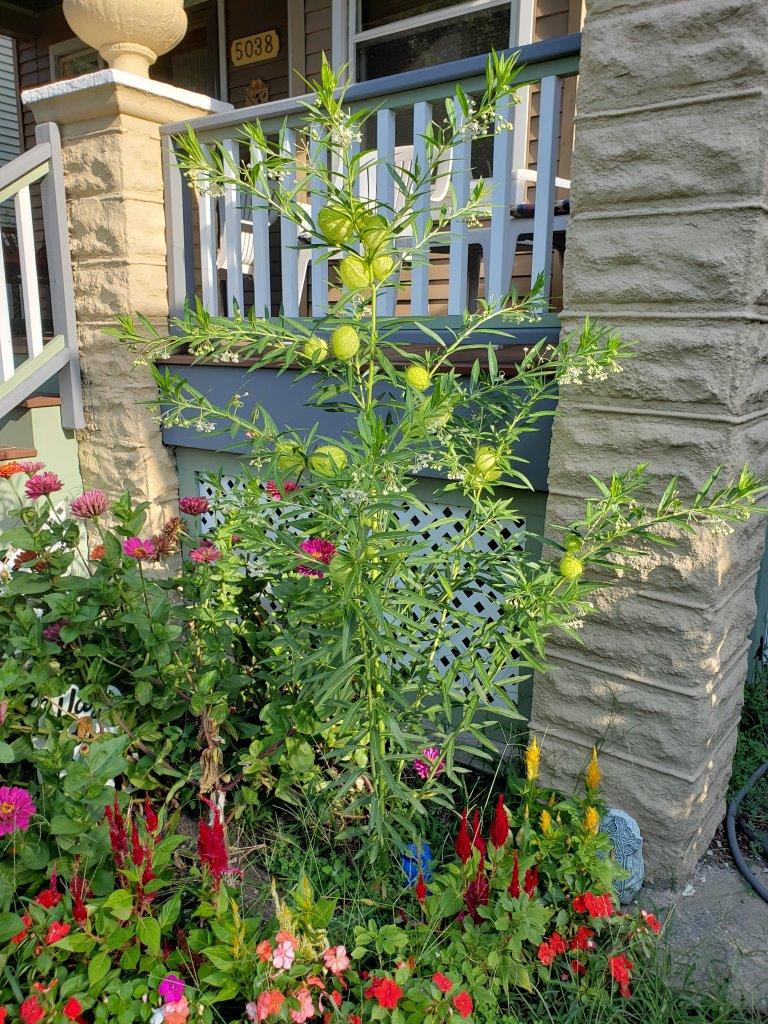
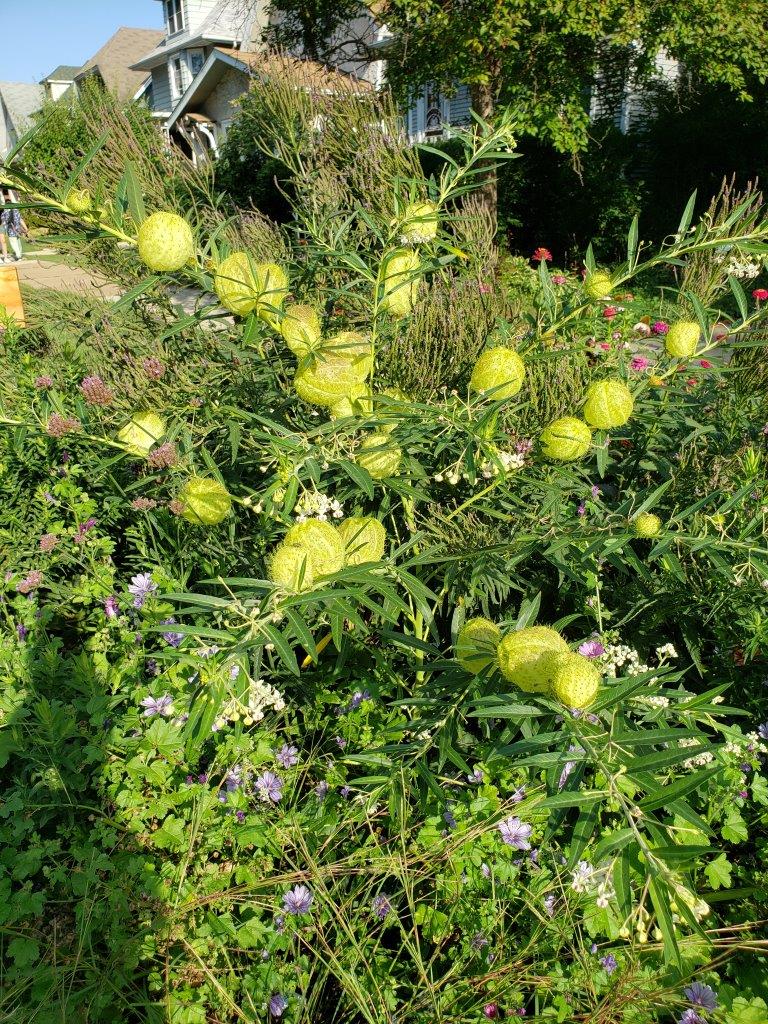
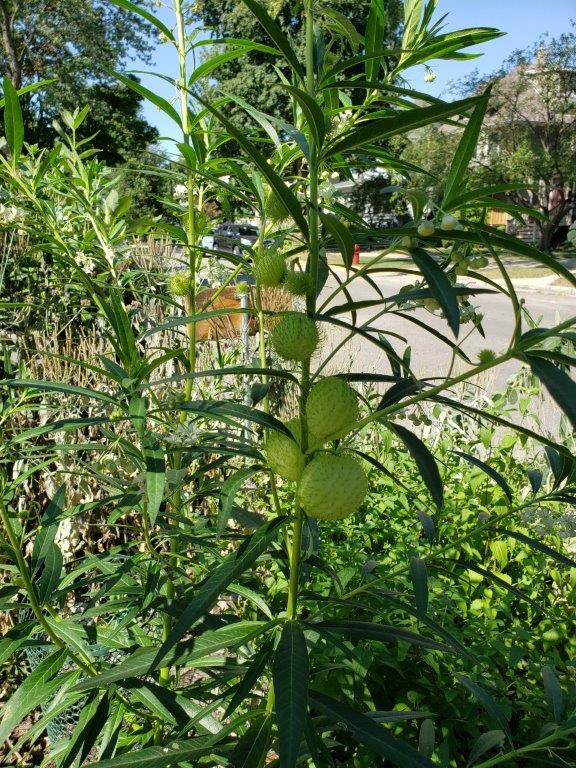
The plants
Since last year was the first summer I grew these annual milkweeds, I was not entirely familiar with their behavior. Here is what I learned:
- If you plan on being able to harvest seeds, you need to start plants early indoors – in March, or earlier.
- At the end of the season, if the plants are left outdoors, they will survive a first or second frost.
- Balls (seed pods) that are left on the plant will self sow and many volunteers will come up next spring.
- Seeds that are direct sown in spring or germinate as volunteers, may develop balls by fall, but probably won’t mature to produce seeds. Our season is not long enough (see first bullet).
- Unwanted volunteer plants are very easy to pull out.
- Birds will use the silk inside of the mature balls as a soft and cozy nesting material.
- Reminder: this is an annual plant. It is not native to our region.
- The plants do prefer full sun but did OK in partial shade.
- The plants seem to be pretty thirsty so, if grown in pots, daily watering is recommended.
Balloons A-Popping
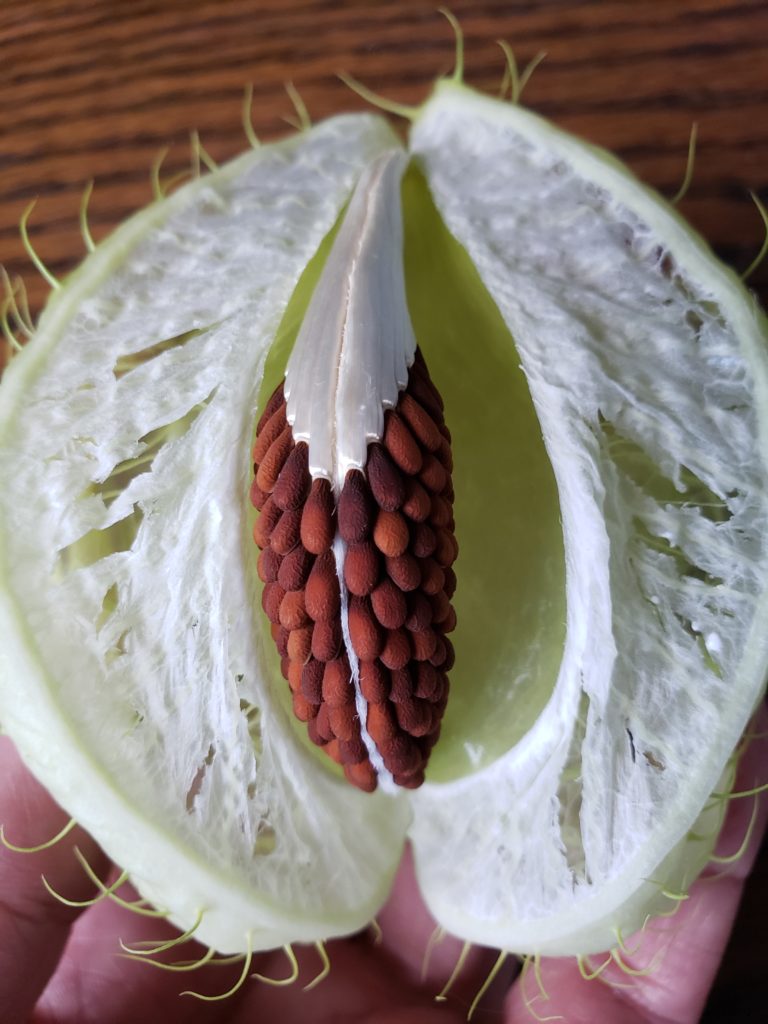
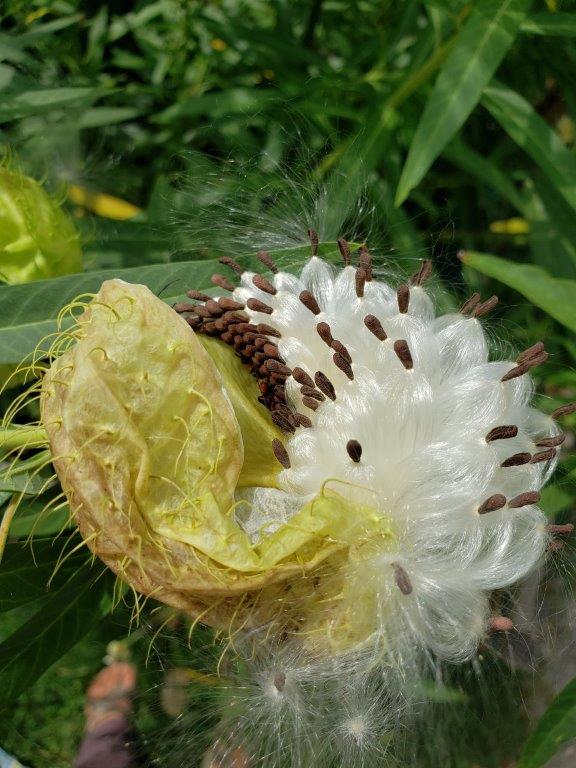
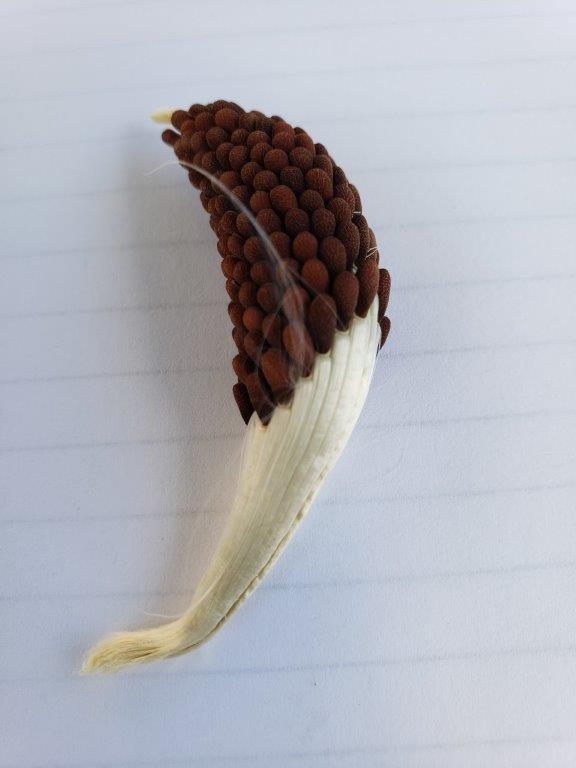
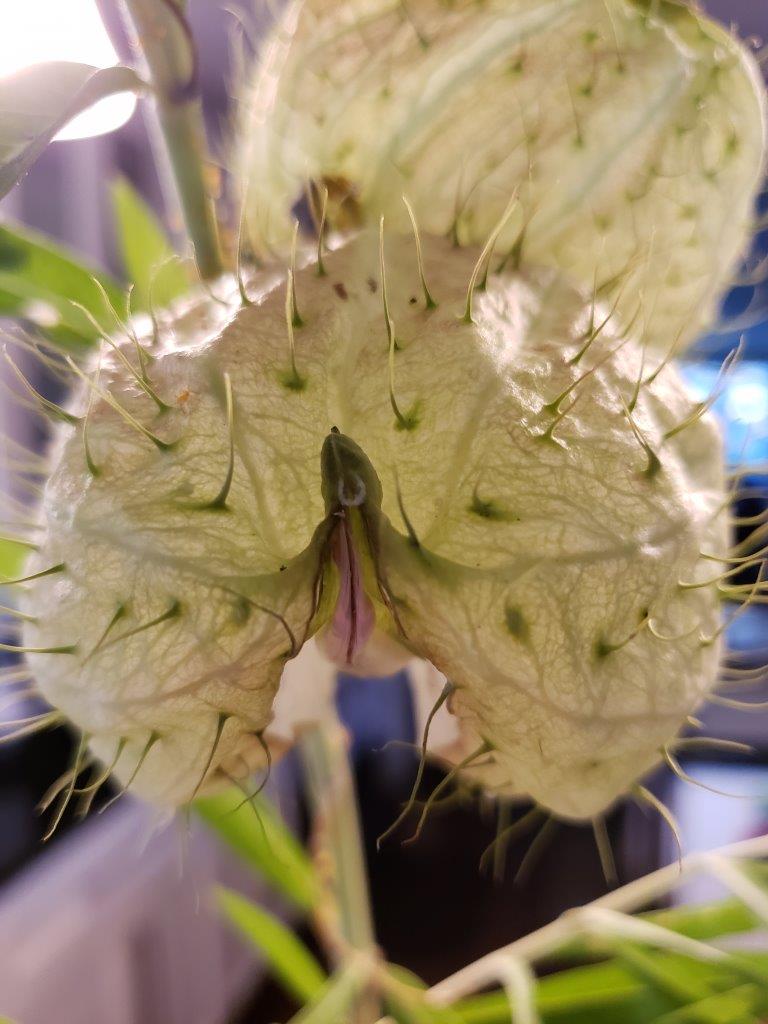
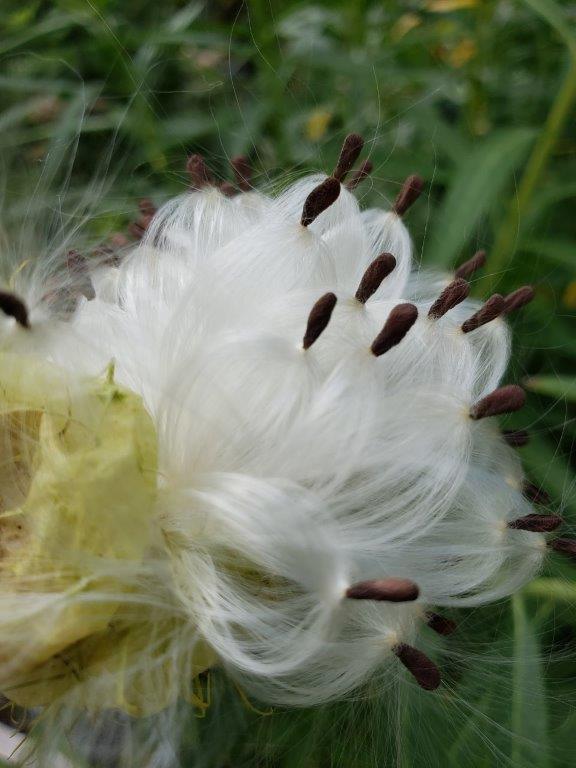
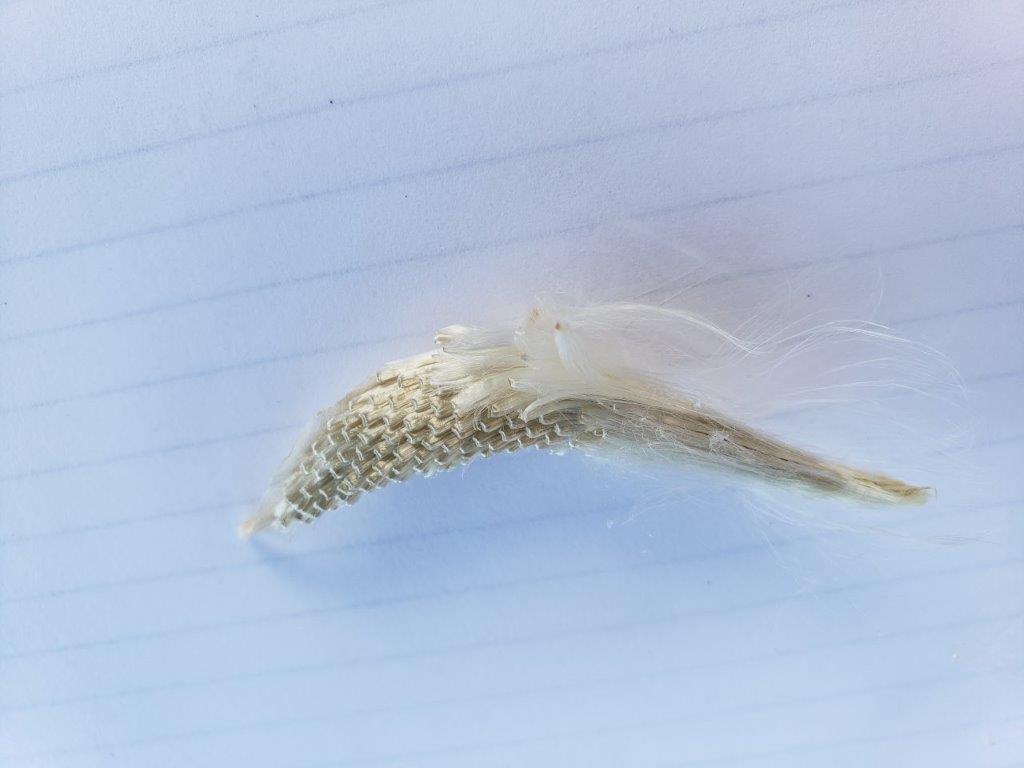
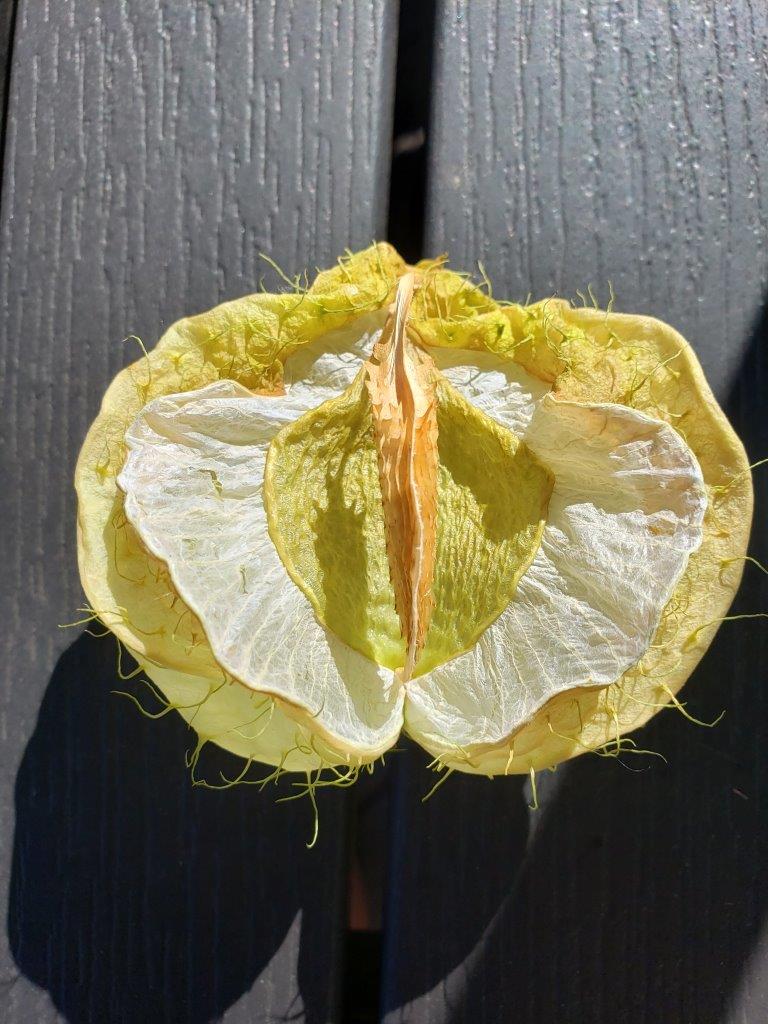
save The Monarchs
- The monarch butterflies will lay their eggs on this variety of milkweed, and the caterpillars will readily eat the plants.
- When so many balloon milkweed volunteer plants germinated this spring, I was going to yank most of them out from my beds, but then I found lots of eggs and caterpillars on them, especially on the baby plants. So I left them in the beds, realizing that meant much more food for the butterflies.
- If you don’t want to commit to growing native, perennial milkweed plants, consider growing these balloon milkweeds, as a source of food for monarch butterflies, even if your plants don’t develop the delightful hairy balls.
It’s fall now, so I go out every day and squeeze those hairy balls to see if they are soft and ready to pop. A pleasant activity.
If you want balloon milkweed seeds to grow next year, just let me know. I have plenty.
